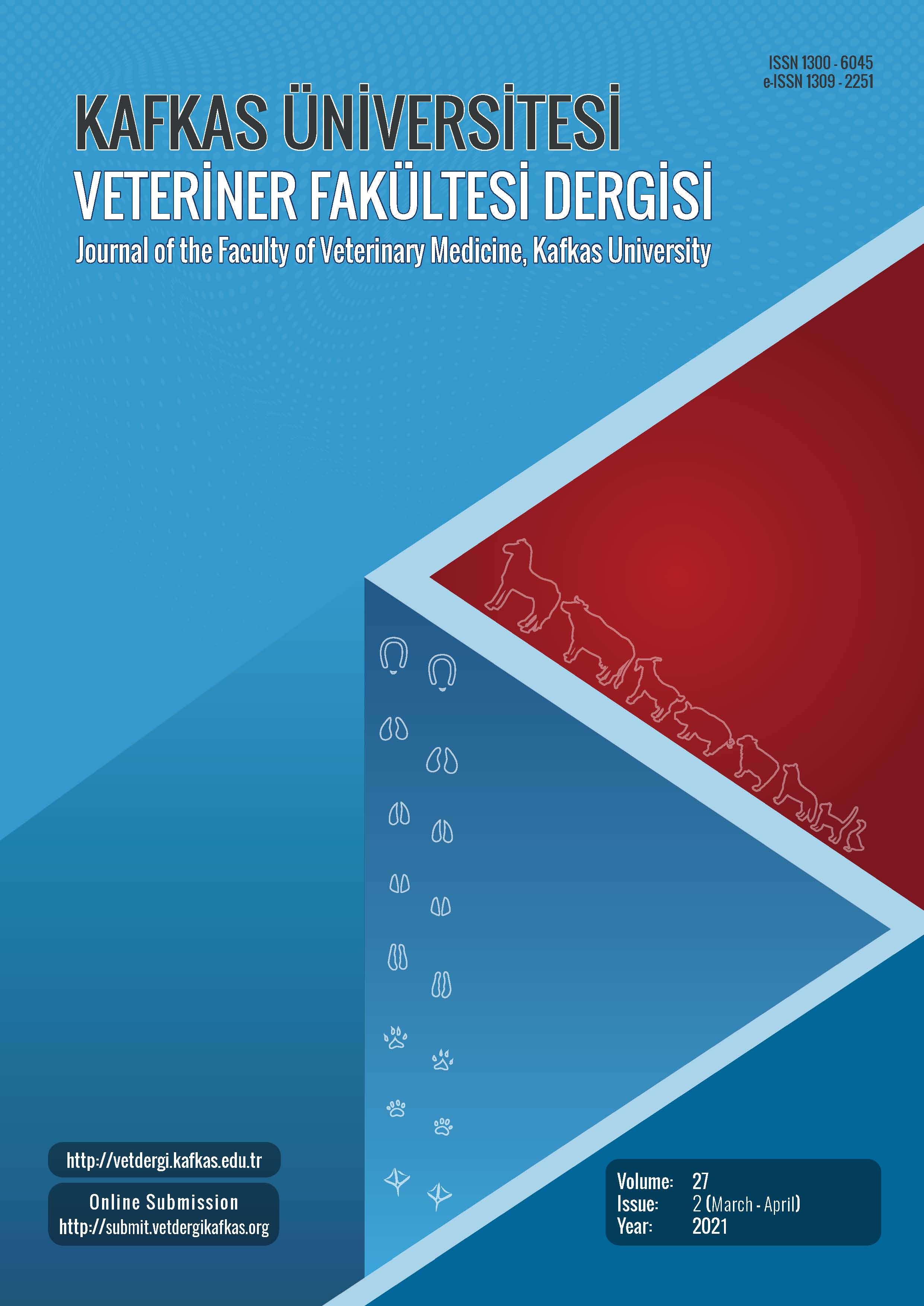
This journal is licensed under a Creative Commons Attribution-NonCommercial 4.0 International License
Kafkas Üniversitesi Veteriner Fakültesi Dergisi
2021 , Vol 27 , Issue 2
Bm86 Genetic Diversity of Indigenous Tick Population from Punjab Province Pakistan
1Department of Parasitology, University of Veterinary & Animal Sciences, Lahore, PAKISTAN2Institute of Microbiology, University of Veterinary & Animal Sciences, Lahore, PAKISTAN
3Institute of Biochemistry and Biotechnology, University of Veterinary & Animal, Sciences, Lahore, PAKISTAN DOI : 10.9775/kvfd.2020.25019 Ticks transmit a number of bacterial, protozoal and viral pathogens that cause many diseases like ehrlichiosis, hemorrhagic fever, theileriosis, babesiosis and anaplasmosis in livestock. This study was designed for molecular characterization of BM86 gene of Rhipcephalus (Boophilus) microplus tick. In this study, the BM86 gene was amplified, using primers fl anked by restriction enzyme sites. The molecular detection of R. microplus was studied in three districts belonging to diff erent ecological zones in the province of the Punjab, Pakistan. Tick samples were collected and initially screened through microscopy and further analyzed by PCR and sequencing, the phylogenetic tree generated by using the MEGA 7 through Neighbor Joining method using best model through the phylogenetic analysis of R. microplus. Pairwise comparisons of nucleotide sequences showed nucleotide diff erences ranging between 0.007 and 0.01%. Haplotype and nucleotide diversity in Bm86 gene was found among diff erent districts. Six single nucleotide polymorphism were seen sequences of BM 86 from indigenous tick population collected from the Punjab province. More interestingly out of these 6 polymorphism we got 2 from district Okara, 3 from district Sahiwal, and 1 in Mandi Bahauddin. Conserved regions were observed among the local strains for BM86 gene. A common convergence in similar clade was with the local Pakistan R. microplus. Local mean diversity was 0.005 and overall mean diversity was 0.038. Field strain has been isolated as candidate specie for local tick vaccine, which in turn will increase the efficacy of future tick vaccine including reduction of economic burden on the farmer. Keywords : Rhipcephalus (Boophilus) microplus, BM86 gene, Molecular characterization










